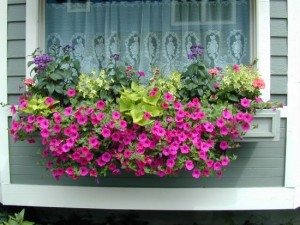Dynamic Plant Combinations
Learn how foliage, color, texture and form can create beautiful compositions in the garden.
COLOR: Use color to frame, define and highlight specific plants in the garden
Monochromatic color
• Green + one color ~ good way to incorporate variegated plants with cream, white or pale yellow
• An array of one color ~ i.e., all blues or all greens
Analogous color: colors next to one another on the color wheel
• warm tones together
• cool tones together
Complementary color: High contrast using colors opposite or nearly opposite each other on the color wheel
• orange-purple
• yellow/gold-blue
• red-green
TEXTURE:
• Get interest from foliage even if you don’t have flowers
• Keep one element as “common denominator” such as foliage color or using plants from same family (example: sedums, hostas, hebes)
• Balance small, medium and large-leafed plants
FORM: Consider a plant’s overall form or growth habit ~ arching, weeping, mounded, spreading, open or dense
• You can mix colors if your “form language” is common (example: large phormium/New Zealand flax + small black mondo grass)
• Pair densely-formed plants with open-formed plants for a cool effect (look “through” one plant to enjoy the other’s beauty)
• When you can’t repeat specific plants, repeat similar forms
SCALE/PROPORTION:
• Balance tall and short plants with a common medium-scale plant that echoes elements of each
• Create emphasis, dominance and focal points with scale









